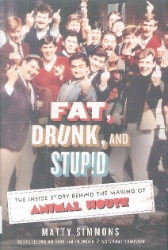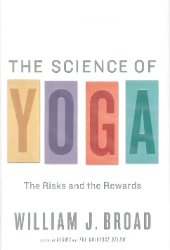Good luck on your exams! Here are some college study tips for students from CollegeTips.com:
Create Mnemonics
Mnemonics are devices that can help you memorize formulas, key concepts, definitions, etc. A really basic example of a mnemonic is “Please excuse my dear Aunt Sally” which stands for parenthesis, exponents, multiplication, division, addition, and subtraction.
Make a Study Guide
Whether or not your professor gives you a study guide for an exam, making a study guide is very helpful when studying for tests. Go through the textbook, notes, and any other material and write down any information that you think may be on the test such as important concepts, definitions, and formulas. Reading and writing the information will help you memorize it faster. If your professor gives you a study guide, make sure to cover all the points listed.
Make Flash Cards
Making flash cards can be a bit time consuming, but flash cards are helpful tools in remembering vocabulary, formulas, and key concepts. They are also easy to carry around with you so you can review them anytime.
Quiz Yourself
To ensure that you are prepared for your test, make a mock quiz to test how well you know the material. Write down a list of keywords or questions and make sure to leave room underneath each one. Then, pretend that you’re taking the test and write down as much as you can.
Set Time Goals
Setting time goals for yourself will help make sure that you stay on track especially when you have time constraints. You’re more likely to be productive if you have goals to achieve.
Remember to Take Breaks
Studying is hard stuff. You need to take short breaks to allow your brain to process and retain the information. Otherwise, you may confuse yourself or forget something you have already studied. Be sure to take only a short break, otherwise, it may be hard to go back to studying. When you begin studying again, review the material you have already studied, then, move on to something new.
Don’t Study Alone
Studying with other people is always easier, because you are all there and you know nothing else is going on. If possible convince your college friends to meet at the library at a specific time on a regular basis. If you and your friends have different schedules, do your best to find time when at least two of you are able to meet. This will also help you and your friends develop good study skills, keep tabs on your friends, and make sure they will be with you on graduation day.
Study During the Week
For those college students who like to party, studying during the week is the way to go. Typically studying Monday through Thursday is the way to go. When it’s not football season, Sunday could also be a good day, but never count on it. If you have time between or after classes while you are still on campus, that is the best time to pop into the library for a quick hour of studying. This will allow you to enjoy your nights without worrying about studying later. Thursdays are notorious for being college party nights, so dont plan on studying late that night. College students that are big partiers will be hungover Friday, Saturday and Sunday, so the week is usually the best time. Having self control and studying hard all week should allow students have the weekends free.
Schedule Time for Studying
College students who regularly have gaps in their class schedule should mark off those hours as study time. By making it part the routine, students should get into the habit after a few weeks, and not even think about it. The key is to start right away and try not to cheat. College students who do not have gaps in their schedule should plan for times before or after class, or schedule time at night.
Get lots of sleep
College Students who get a full night of sleep are usually more alert, more focused and learn things easier than those who are sleep deprived. Try to keep your sleep schedule as consistent as possible. On the weekends avoid sleeping in too late, because it will make it harder to wake up for your first class.
Avoid Studying on Coffee, Ritalin and Adderall
Since studying is no fun, students look for ways to enhance their ability to study an stay focused. Coffee has been used by college students to pull "all-nighters" or just to prevent falling asleep in an open book. If you choose to use coffee as a study aid, monitor your sleep patterns and how you feel throughout the day before making it a regular habit. Ritalin and Adderall are prescription drugs used to treat ADD (Attention Deficit Disorder) and ADHD (Attention Deficit Disorder). These drugs are hard to predict because they are made for students with ADD/ADHD. Students without either disorder are advised not to take these if not prescribed, but there are always college students who choose to sell some or all of their prescribed medication. If you choose to go that route and try it (not recommended), be sure to try small doses at first (5 mg or 10 mg) so you can see its effects. As always, students should only take things from those who are trusted.


 What’s the basis of this compass? You’ve probably heard of the “blue zones,” those pockets around the planet where people live longer at a higher rate than elsewhere. Well, the team studying the lifestyles of people in those zones say they share
What’s the basis of this compass? You’ve probably heard of the “blue zones,” those pockets around the planet where people live longer at a higher rate than elsewhere. Well, the team studying the lifestyles of people in those zones say they share 

 to advance, and then to select autoplay click it under “More”):
to advance, and then to select autoplay click it under “More”):